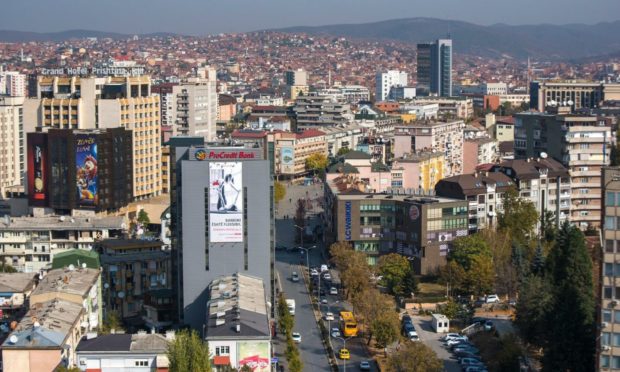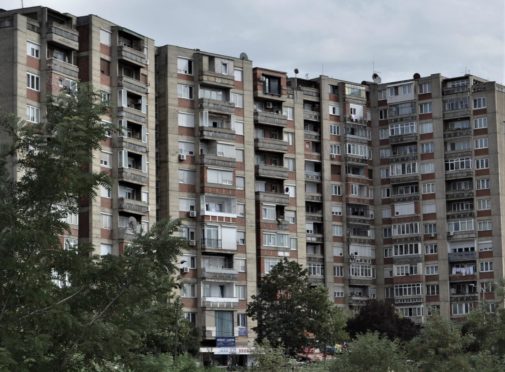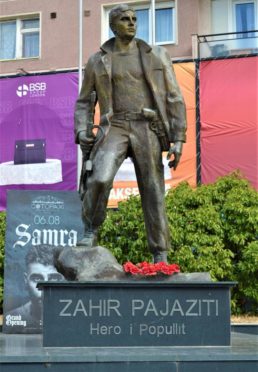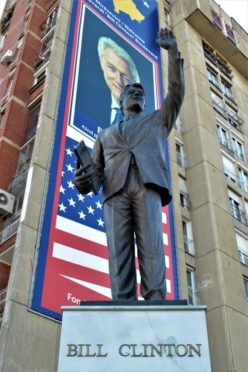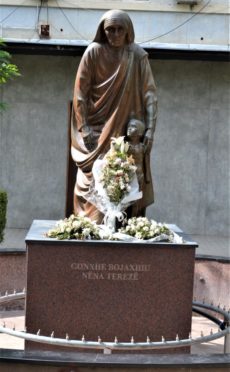After the bloody break-up of Yugoslavia, Kosovo endured a brutal war with Serbia in the 1990s. With much fanfare, Kosovo then, with support from many and opposition from other countries, declared its independence from Serbia in 2008.
Officially known as The Republic of Kosovo, it is today recognised by more than 100 countries, including the UK, US and much of Europe. Those who do not recognise Kosovo, apart from the obvious Serbia, include Russia, China and Iran
In 2010, the International Court of Justice ruled that Kosovo’s declaration of independence was not illegal under international law.
Pristina, with a population of around 210,000, is the capital of Kosovo, and after arriving the night previously, I spent the next two days exploring its crooked and winding little streets.
Has it improved since I was here last? Yes, it has, but it’s got a long way to go.
Kosovo is still classed as one of the poorest countries in Europe. Although not in the EU, Kosovo hopes to change that as soon as it can. Will it get it? On paper it should not. Corruption, although not as bad as it was, is still too high. Poverty is rife and infrastructure, again although getting better, needs much improvement.
Litter is a massive problem, and from what I could gather, there is nearly zero recycling.
What can Kosovo possibly offer the EU? Not much in my view. Why should German and Swedish taxpayers, amongst the biggest contributors to the EU budget, fork out more to pay for Kosovo?
The work ethic down here is a million miles away from, say, northern Europe. Will Kosovo gain entry to the big boys’ club that is the EU? It wouldn’t surprise me if it did.
That would be, in my view, another nail in the coffin of the EU. It should be noted that despite not being in the EU, Kosovo does use the euro as its currency.
As mentioned last week, the centre is full of beggars. Roma gypsy I was told. From where? Everywhere. Stray dogs are also a problem. Most are not aggressive, but some can turn angry for seemingly no reason very quickly, as I found out. Keep your distance, I was told.
An interesting mix of Kosovan/Albanian culture, laid back Islam and café life would be the best way to describe Pristina.
Pollution is bad down here, really bad. Cars and trucks are old and belch out toxic fumes. I wore my bandana tight around my nose and mouth, not for Covid, but pollution. At the end of the day after walking around for hours, it felt like I had smoked a few Capstan Full Strength cigarettes.
Nearly everyone smokes here; it’s fascinating to see old men sitting at roadside cafes, with cars belching out fumes just feet away, and them still puffing away non-stop on strong smelling cigarettes.
Dirty and bedraggled child beggars approach you at every café as soon as you sit down. There is big money to be made. Some can earn more than an adult working in a shop I was told. You have to learn to say no. A quick shake of the head, then look away usually does the trick.
Pristina suffered from heavy bombardment in the ’90s. Rebuilding is constantly ongoing, with much still to do. It’s a friendly place, especially friendly towards Americans and Brits. Kosovans have never forgotten our help and stance against Serbia’s Milosevic. Alongside the Kosovan and Albanian flags, British and American flags fly proudly outside hotels and are on sale in many shops.
“If it wasn’t for NATO, we wouldn’t even be here,” I’ve been told on more than one occasion.
No visit to Pristina is complete without visiting Bill Clinton Avenue. Not a spectacular street by any means, it’s dedicated to the man who finally, after much indecision from the west, ordered the bombing of Serbia, which halted the ethnic cleansing of Kosovan Albanians.
A gleaming 10-foot statue of the former president stands tall and proud just off the busy street.
From a Kosovan point of view, Clinton undoubtedly deserves recognition. However, I find it odd to see this kind of statue erected in a former communist state. Maybe a large photo and or plaque would have been more appropriate?
Another must-see is the Newborn monument. A 79-foot long, nine-tonne structure that spells out the word newborn in English. It was built in 2008 to mark Kosovo’s declaration of independence. It stands proud and glistens when the sun shines on it. It does, however, look out of place, especially when all around are old, crumbly, grey buildings in varying states of disrepair.
I walked up and down and all over Pristina for two days. Not so far away from the fashionable cafes in the centre, it gets even more crumbly. Millions of dollars, pounds and euros have poured in from the international community, but it will take even more and many more years before Kosovo is up to scratch for the 21st Century.
A statue of Mother Teresa also stands in the centre of Pristina. Hailed the world over as a saint, would it surprise you to learn that I’m not in awe of her? That may shock you, for was she not the epitome of kindness? Did she not dedicate her life to helping others?
I don’t have the column space to go into it here – so all I’ll say is this. It was my favourite journalist, the late great Christopher Hitchens who first brought my attention to her many years ago. He even wrote a book on her, it’s called Hell’s Angel. This may sound highly controversial to you, but the nun herself was highly controversial. If you’re interested, I highly recommend this book.
Be it Serbia, Albania, Kosovo or Macedonia, no trip to the Balkans can be done without eating burek. Unless you’ve got heart disease that is. Mind you, if you didn’t have heart disease before eating it, you probably will have after.
It’s a pie sort of thing, with about a million layers of buttery filo pastry stuffed full of either spinach, minced meat or thick gooey cheese. Bakeries and restaurants serve them literally everywhere. I found a small cafe and chose a cheese one. It seems to only come in one size – giant slab size. At 8am, washed down with an expertly made strong black coffee, I ate my densely calorie-laden burek. Gorgeous. The bill for the burek and coffee? £1.50.
It was time for me to move on. I would not be sad to leave my dingy hotel room. With a dribble for a shower, I longed for a good wash.
I was heading to the complicated northern city of Mitrovica. I’d not been here for a few years and was therefore extremely interested in finding out the state of it today. I’d also booked an apartment for four days. Surely that would provide better accommodation?
The town of Mitrovica, more than any other, symbolises Kosovo separating from Serbia.
Mitrovica is a city divided in two, by a bridge. Kosovan Albanian Muslims live in the south, and Orthodox Serbs in the north.
It really is a case of never the twain shall meet…
Next week – Divided Mitrovica
A previous version of this article stated that Israel does not recognise Kosovo. However, as of September 2020, Israel does in fact recognise Kosovo. We apologise for any confusion.
